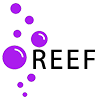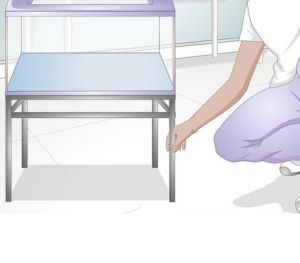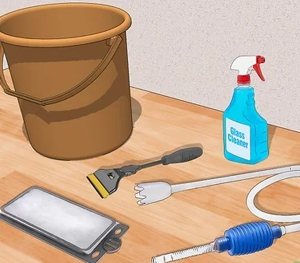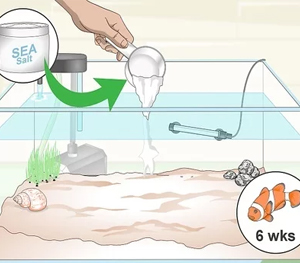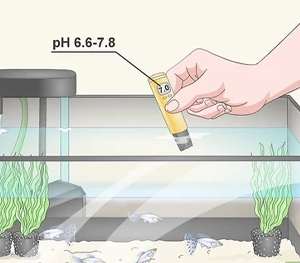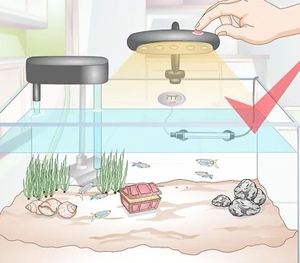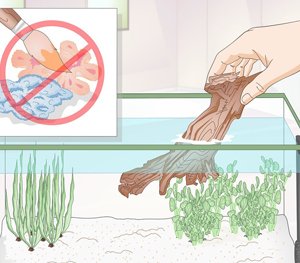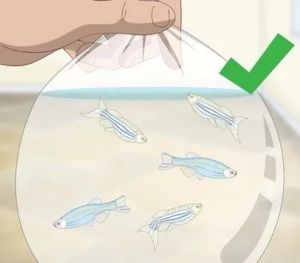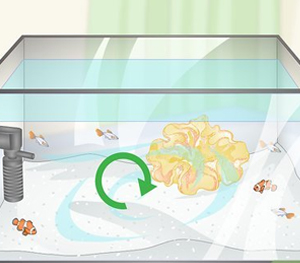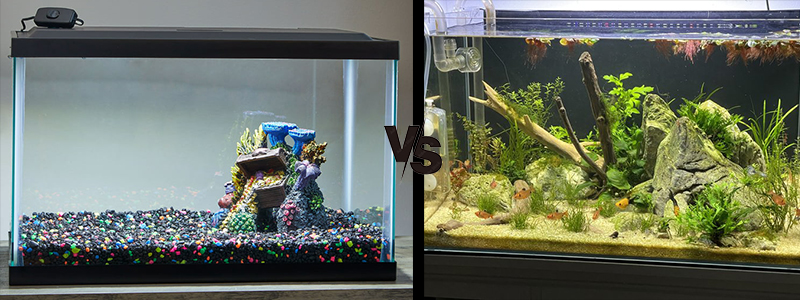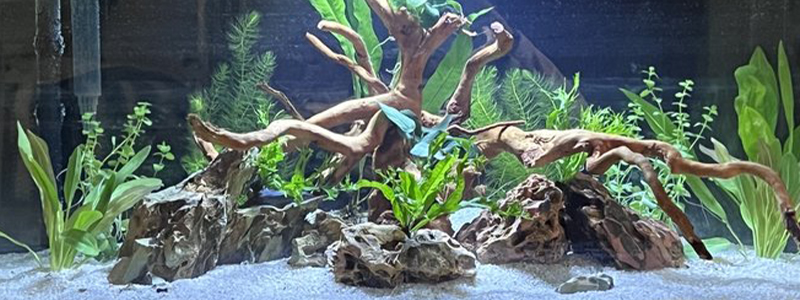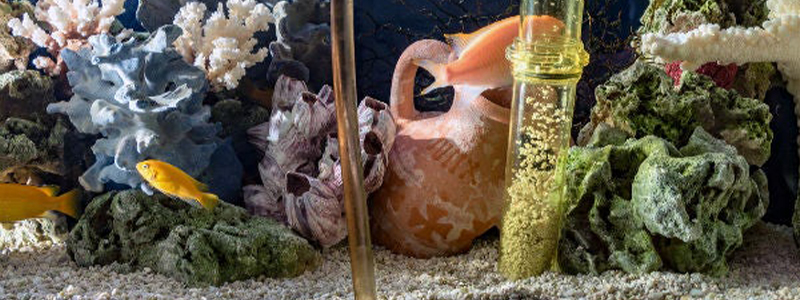Undoubtedly, building a reef aquarium setup is truly a captivating experience for all aquarium lovers!
Creating your very own reef tank is an amazing thing to do if you want to add natural marine beauty to your home or office. In contrast to conventional freshwater fish tanks, a reef tank setup showcases a twist as it operates as a saltwater aquarium.
If you are new to this hobby, you might be wondering what do you need to start a fish tank. Well, you don’t have to worry about it or the process because everything is written below!
With some patience, and with the help of our comprehensive guide to reef tank setup for beginners, you can begin your exciting journey into owning a good reef fish tank setup.
Building a Reef Aquarium: A Perfect Guide for Reef Tank Setup for Beginners
Now, we know that considering the vast online information available, it can be difficult to sort out the necessary steps and what do you need to start a fish tank. Therefore, we’ve made this reef tank setup for beginners guide divided into seven simple steps. Have a look!
Disclosure: This article contains affiliate links. When you follow a link to purchase the products, I sometime earn a commission, at no additional cost to you. Read my full disclosure here.
Step 1: Tank Size and Location
Where to Keep your Aquarium
Before you buy a tank, choosing the appropriate spot for building a reef aquarium is just as important, so that you can know how large your tank should be.
Make sure you have sufficient space to move around comfortably when working with the tank.
It’s best to avoid positioning the aquarium near doors or windows that could potentially let in chilly gusts of air, and stay away from areas that receive direct sunlight. To decide on the perfect location for a reef tank setup for beginners, it is advised to check the dimensions of the tank you intend to buy and measure your available space accordingly.
Tank Size
It is said that the bigger the tank the better it is in the long-term. However, for newbies out there, we would still suggest opting for a smaller reef tank setup as it is easier to maintain and also, obviously according to the size that could fit in your chosen space.
Step 2: Required Tools and Setup
Selecting Equipment
As you get ready to set up a reef tank, the first question that pops into anyone’s mind is; what do you need to start a fish tank? This means all the necessary tools!
A salinity refractometer, aquarium heater, high-quality canister filter, protein skimmer, live rock, tank, tubing, and an aquarium stand are all what do you need to start a fish tank. Furthermore, don’t forget to purchase LED lights made specifically for reef tanks as well.
Set-up
So, when it comes to reef tank setup for beginners, you have two choices: all-in-one aquariums or building a reef aquarium of your own from scratch.
All-in-one reef tank setup offers a shortcut to get started as you don’t have to assemble it. They are available in various sizes, from desktop versions to larger 140-gallon (525L) systems.
On the other hand, building your own good reef fish aquarium allows for more customization but requires purchasing equipment separately and putting it together yourself, which means double the effort too!
While this option may save you some bucks, it will need patience and plenty of time from your side. You can start with just a tank and powerhead if you prefer minimal equipment and then gradually expand your reef tank setup as desired. Ultimately, the decision depends on your ease and money.
Step 3: Adding Saltwater and Water Testing
Saltwater Preparation
It is important to refrain from using regular table salt in your good reef fish aquarium because it contains harmful additives that can negatively impact marine life.
Instead, you have two alternatives: either buy pre-mixed saltwater from an aquarium store or create your own mixture. To make your own saltwater solution, combine reverse-osmosis water with a sea salt mix which can be easily obtained from an aquarium store.
You must keep 2 things in mind when preparing saltwater for reef tank setup for beginners;
- Do not use table salt in the reef tank setup because it might have come into contact with copper piping, which is bad for fish and corals. Choose reverse-osmosis water instead.
- To leave enough room for aquascaping without risking water spilling over the top. Only fill your tank halfway.
Water Testing
To keep a well-balanced and healthy reef tank setup, you must know what is going on inside and are water parameters up to the mark. The generalized water parameter for reef tank setup for beginners are;
- Alkalinity- 8-12 dKH
- Calcium- 350-450 ppm
- Magnesium- 1250-1350 ppm
- Phosphate- <0.2ppm
- Temperature- 75 – 80°F (23.5 – 26.5°C)
- Salinity- 35ppt or 1.0264 specific gravity
Pro Tip: While local fish stores can provide testing services, having an aquarium test kit at home is beneficial. It’s another important thing to add to the list of what do you need to start a fish tank! To ensure complete water preparation, utilize a saltwater tank kit for checking pH levels as well as ammonia and nitrite concentrations.
Step 4: Placing Equipment
Aquarium Heater
To get started with building a reef aquarium, the first equipment to be installed in is an aquarium heater. There are different types available: you can affix it to the tank wall, hang it from above, or submerge it in the water.
The optimum water temperature is 26°C. For optimal temperature control, position the heater close to your filtration system in the reef tank setup.
Powerhead
After that, introduce a powerhead into your reef tank setup for beginners for consistent water movement and increased oxygen levels. Additionally, if temperatures begin rising too high within the tank environment, a powerhead can assist in cooling things down efficiently.
LED system
Choose the appropriate lighting system for your reef tank. LED light is a great option for a small reef tank setup, such as nano reefs, while larger tanks might benefit from metal-halide lamps to provide higher light intensity and PAR. Prioritize lights with a blue spectrum and be careful not to generate too much heat to keep your good reef fish safe.
Filtration
When building a reef aquarium, don’t forget to place a filtration system! Install an efficient filter and, if needed, consider investing in a high-quality sump specifically designed for reef tank setup for beginners.
Moreover, you can also include additional equipment like protein skimmers or reactors to optimize filtration performance in reef tank setup.
Step 5: Decorate and Build Hiding Spot for Fishes
When creating your good reef fish tank, begin by getting the live rocks ready. This involves eliminating any sponge or algae and transferring them to a separate filtered tank without any light for around a month so that beneficial bacteria and algae can flourish.
Now, arrange these live rocks in your reef tank with enough space between each rock to ensure proper water flow. The next step is to add your desired decorations to put on display and complete setting up your magnificent reef tank setup for beginners.
Step 6: Add Good Reef Fish and Coral
Once your good reef fish aquarium has been running for minimum of five to six weeks, it is time to start introducing good reef fish, and corals. It’s important to take a slow and cautious approach when adding new good reef fish.
Consider beginning with snails, hermit crabs, and peppermint shrimp as your initial good reef fish choices. When adding corals to the tank, opt for hardy beginner varieties such as leathers, zoanthids, or mushrooms.
Moreover, bear in mind that not good reef fish are compatible with everyone, and do thorough research before adding fish to the tank.
Step 7: Reef Tank Setup Maintenance
- It’s really important to regularly change the water in your aquarium. This helps get rid of nutrients and adds back essential elements. Try to aim for changing about 20% of the water every week.
- Keeping your protein skimmer clean is crucial to make sure it works properly. Depending on the capacity of your reef tank setup, you should wash the waste collection cup thrice a week or as needed.
- To keep your aquarium glass or acrylic clear, use a magnetic scraper once a week or even daily if necessary. Just make sure that if you have an acrylic tank reef tank setup for beginners, choose one specifically made for that material.
Conclusion
To sum it up, the journey of a reef tank setup for beginners is a bit tiring process but it’s worth the time and money for sure!
This comprehensive guide to reef tank setup offers valuable insights to assist you in crafting your own good reef fish aquarium, ensuring that the experience is both enjoyable and rewarding.
We encourage you to freely express your thoughts and any obstacles faced during building a reef aquarium, in the comments section below.
